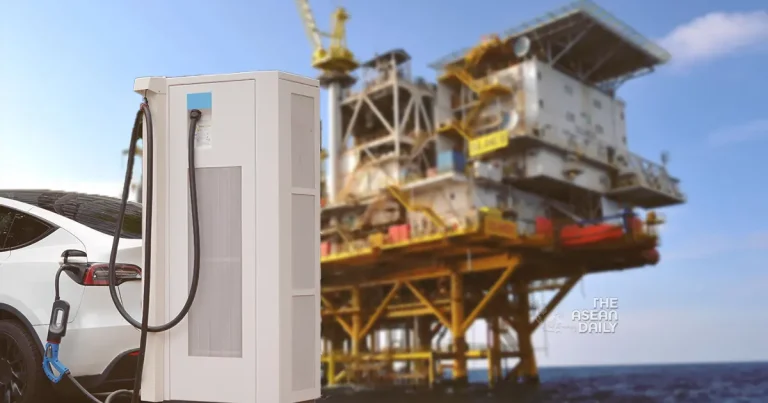5-10-2023 (SINGAPORE) The rise of electric vehicles poses a grave threat to the economies of major Southeast Asian oil exporters. As battery costs fall and global adoption of EVs accelerates in the coming decades, demand for gasoline and diesel is set to plunge. This will devastate revenues for petrostates whose budgets rely heavily on oil income, like Malaysia, Indonesia, Vietnam and Brunei.
While the transition away from fossil fuels will unfold gradually, failure to prepare and diversify now risks severe economic and social crises further ahead when plummeting oil demand hits budgets. Smart producers must take urgent steps to find new economic pillars before their oil wealth disappears. However, most Southeast Asian exporters remain overwhelmingly dependent on petroleum, leaving them acutely vulnerable.
Many dismiss concerns over EVs as premature, noting their still small market share globally. But virtually all major automakers have ambitious plans to massively ramp up EV production in response to tightening emissions regulations. Regulatory incentives for electric vehicles are also expanding to meet climate targets. As battery range anxiety dissipates and charging infrastructure becomes ubiquitous, consumer acceptance will steadily grow.
The outlook is clear – EVs are reaching a tipping point. Within a few years, total ownership costs may align with gasoline vehicles. Once this parity arrives in the mid-2020s, EV adoption will take off rapidly as barriers to purchase fall away. Conventional cars will struggle to compete, with their days in the market numbered.
The implications for oil export-heavy Southeast Asian economies are severe. Demand for their sole major export will plunge just as global oil consumption peaks. Countries like Malaysia and Brunei rely on oil for over 40% of government income. As EV proliferation escalates after 2030, projections show petroleum demand could contract by 10-30% by 2040-2050. With such lost sales, budget deficits in these nations may become unsustainable.
The requisite economic adjustments are larger than any faced to date. Oil wealth has allowed Southeast Asian states to finance extensive public welfare systems, maintaining stability. But this social contract now appears transient. Without new revenue sources found in time, public dissatisfaction may boil over in countries where oil income fueled development.
The UAE provides a prudent example, gradually building non-oil pillars through sectors like tourism, finance and technology. However, most Southeast Asian peers remain wedded to petroleum. Malaysia is beginning to pivot state investment away from oil, while Indonesia talks of developing electric vehicle production locally. But real transformation needs immediate large-scale action.
Some point to expanding petrochemical demand as buffering the oil downfall. But petrochemical sales cannot replace millions of barrels lost daily to EVs in transportation. Plastic usage also confronts its own sustainability constraints long-term. Overall oil demand destruction appears inevitable.
Without oil money, lavish public programs will face steep budget cuts. Deep subsidies for everyday costs may become unaffordable. Bloated state payroll will require painful reforms. As easy oil jobs vaporize with no replacements, unemployment could spike severely across the region. Living standards will fall as former petrostates transition to normalized economies.
Exacerbating this turmoil is excessive near-term oil supply as producers extract reserves preemptively before demand collapses later. A price war would hammer government budgets and further destabilize societies undergoing economic shocks. The social tensions this disruption births could mix with public climate change grievances directed at oil majors and exporting states. Youth activism might even call for punitive measures against those seen as culpable for climate damage.
Relying on fleeting oil largesse has become a path to fiscal ruin and geopolitical irrelevance. True, some regimes look unstable already. But the full effects of lost oil income threaten to spark unrest far beyond historical levels across Southeast Asia. Poverty, conflict and extremism could arise as wayward states lose resources and oversight. The global balance of power may also shift as petrostates’ influence wanes.
For oil-exporting governments, choices are stark – proactively transition now to avoid mayhem, or vacate power to others better equipped to manage disruption. Past oil wealth brought prosperity, yet cannot last. While diversifying proven economies is attainable with political courage and public investment, delay will only deepen future turmoil. Ultimately petroleum’s dominance is finite. Transition offers the sole route to durable and equitable prosperity in a post-carbon era. Adapting to new energy realities stands the sole path to enduring stability and development. The electric vehicle revolution is definitively coming – Southeast Asian nations must prepare to weather it.




